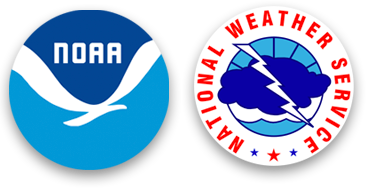Cool Off at Stampede Pass - National Weather Service Heritage
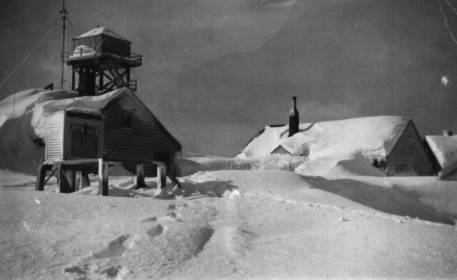
Cool Off at Stampede Pass
By NWS Heritage Projects Editorial StaffThe following article appeared in the July 1956 issue of Weather Bureau Topics.
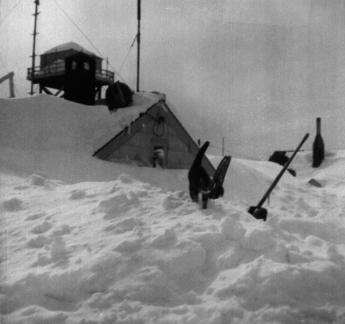
March 1964
WHEN we think of Weather Bureau offices, most of us envision the rush and noise associated with the meeting of deadlines at the average airport installation. At the other extreme, we do have stations where deadlines are at a minimum, where time and its slow passage can become a problem, where silence, except for the hum of radio and equipment and pounding teletypewriters, can be monotonous and complete. Such a station is the one at Stampede Pass, Washington. The station is located on the Saddle Ridge (elevation 3958 feet) and most VFR flights across the Cascades in the State of Washington are made directly over the station. The range divides the headwaters of the Green and Yakima Rivers. These rivers provide a fairly low flight in each direction, so the one big obstacle is this ridge with the Stampede station sitting on a ridge about a thousand feet in elevation above the highway.
The roads leading to the station are usually closed by snow in October and are not open until June. During the summer months , all necessary supplies and food are stocked at the station in preparation for the long winter ahead when the only means of bringing material into the station is by back pack. The weekly mail, which averages about 16 lbs., is the biggest item brought in on a routine basis.
Three men are assigned to the station and work a regular shift of eight hours for five days, after which they get the usual two days off. The office is kept open from 4 in the morning until 8 o'clock at night. The man with two days off can devote himself to housework in the bachelor quarters, indulge in skiing, or make a trip to the "outside",
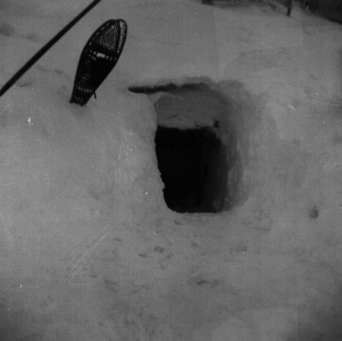
From the Weather Bureau station to Martin the nearest point on the railroad, which is about 24 miles, a trip can be accomplished in about an hour and one-half, while the return trip takes about two hours. During the winter, these trips, of course, must be made on snow shoes and unfavorable conditions can increase the time of the trip proportionately. Though these three men are only about 45 miles from Seattle as the crow flies, they might just as well be 4500 miles as far as accessibility to Seattle is concerned.
One bright spot in their daily routine is the contact which they have by radio with the pilots flying in the vicinity of the station. The CAA has installed equipment in the station and the Weather Bureau personnel operate it as an air-to-ground channel of communication similar to that furnished at many INSAC's with the exception that they do not handle flight plans. It is also a bright in the pilot's day when he can call the station and obtain weather information. It is more desirable and much safer for a pilot coming up the valley to call the station and get a current report on ceiling, visibility, and winds rather than to investigate the situation in flight. If the station is reporting "zero-zero", the pilot knows it is impossible to cross the ridge and can take appropriate action at once, rather than to fly all the way to the ridge and then have to turn back. Winds sometimes blow past the station at a velocity higher than the cruising speed of some. At times, gusts of over 100 miles per hour are observed at the station.
Without a snow shovel and the brawn to make it operate, activities at the station would soon come to a standstill. At one time during the winter of 1955-1956, the snow measured 17-1/2 feet deep which made it necessary to tunnel for access to doorways and to obtain light through the windows. an hour or so, the wind can fill these man-made holes in the snow, and there is nothing the observer can do but to get out his snow shovel and start digging.
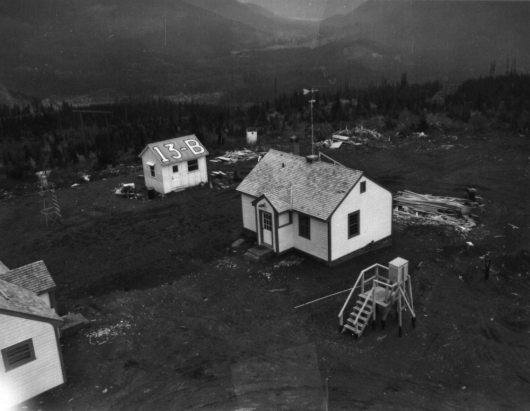
snow. Photo taken Sep. 1947.
For someone interested in outdoor sports, this station has many possibilities, especially during the summer months when the Cascades are at their beck and call for fishing, hiking, hunting, berrying, etc.
During the past winter, the station was manned by Mr. George Foster, in charge, Mr. Max Baumgartner, and Mr. Harley Lillienthal. Comfortable furnished quarters are provided (except for bedding and linens) for the three employees. No quarters are available for employees' dependents. Salary deductions for the quarters are about $109.00 per annum. The cost of food is borne through a common fund.
